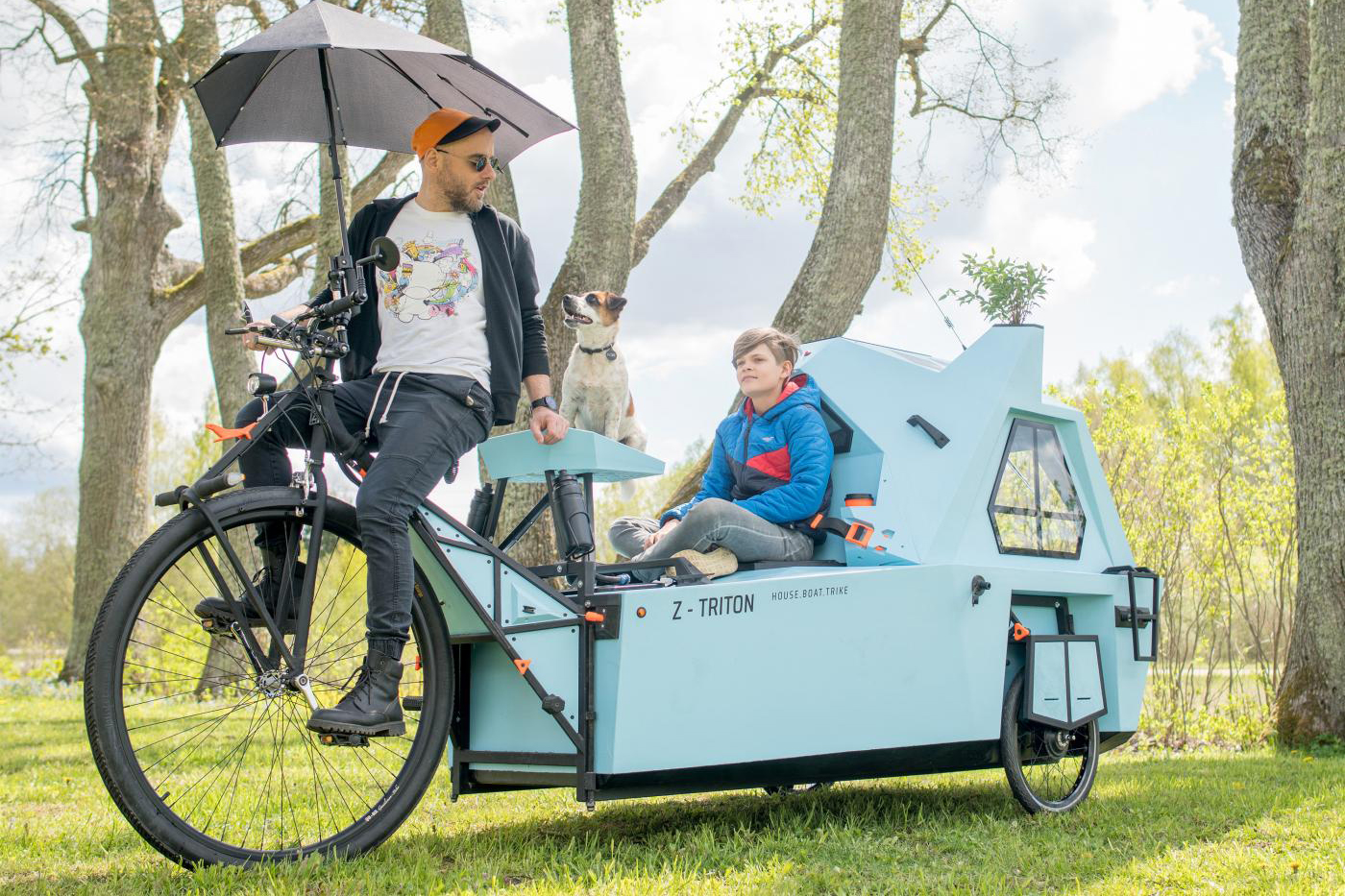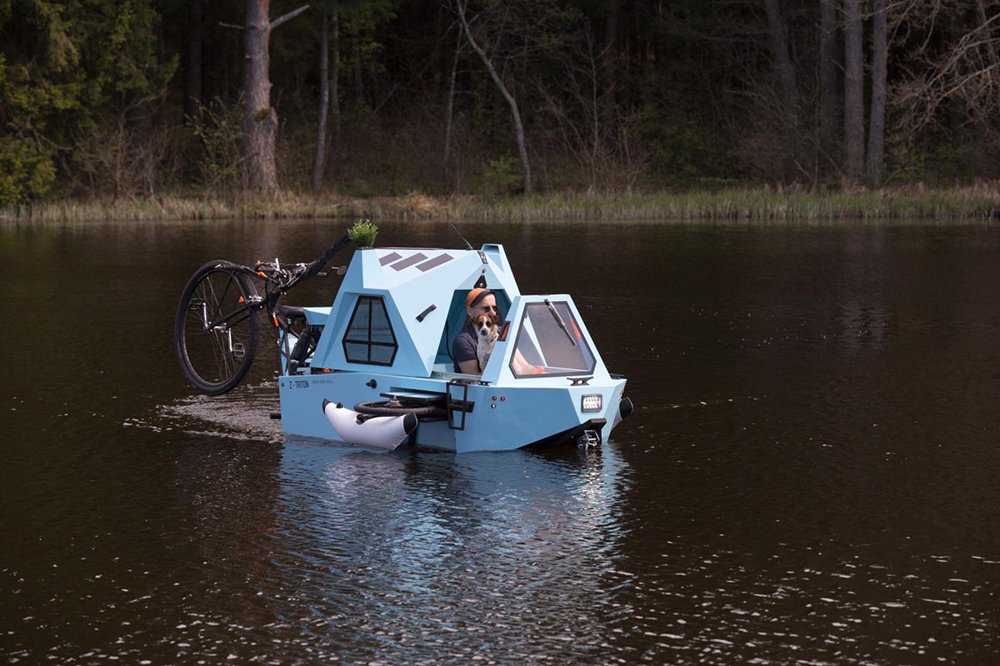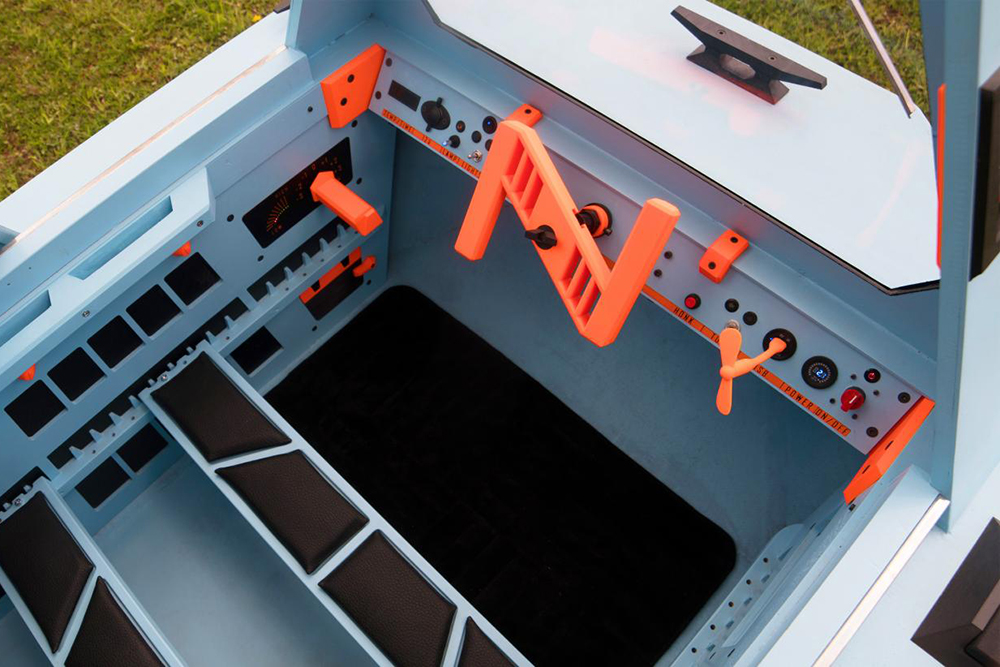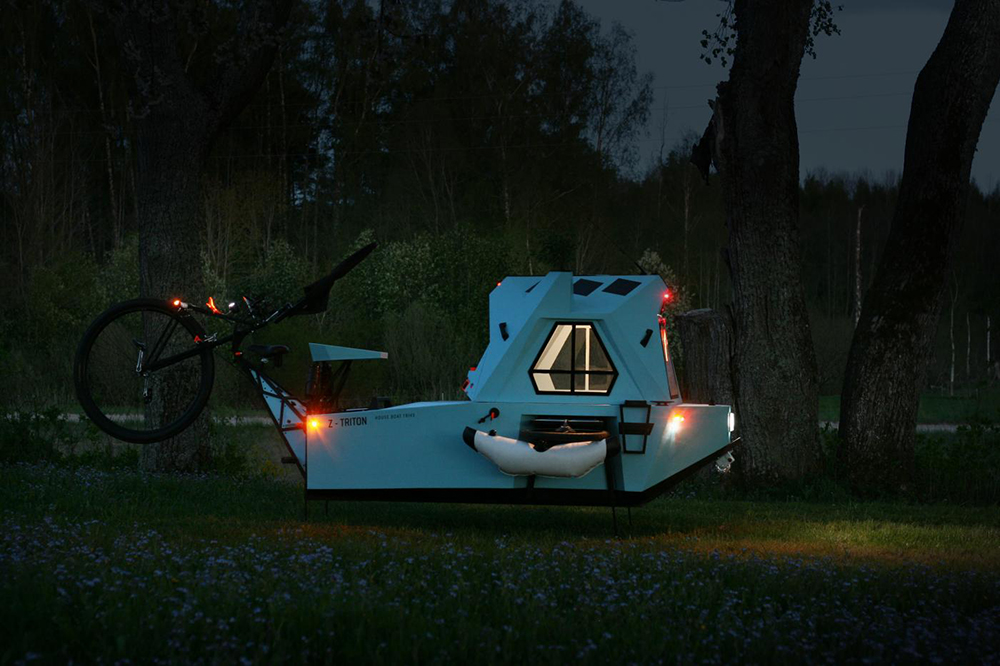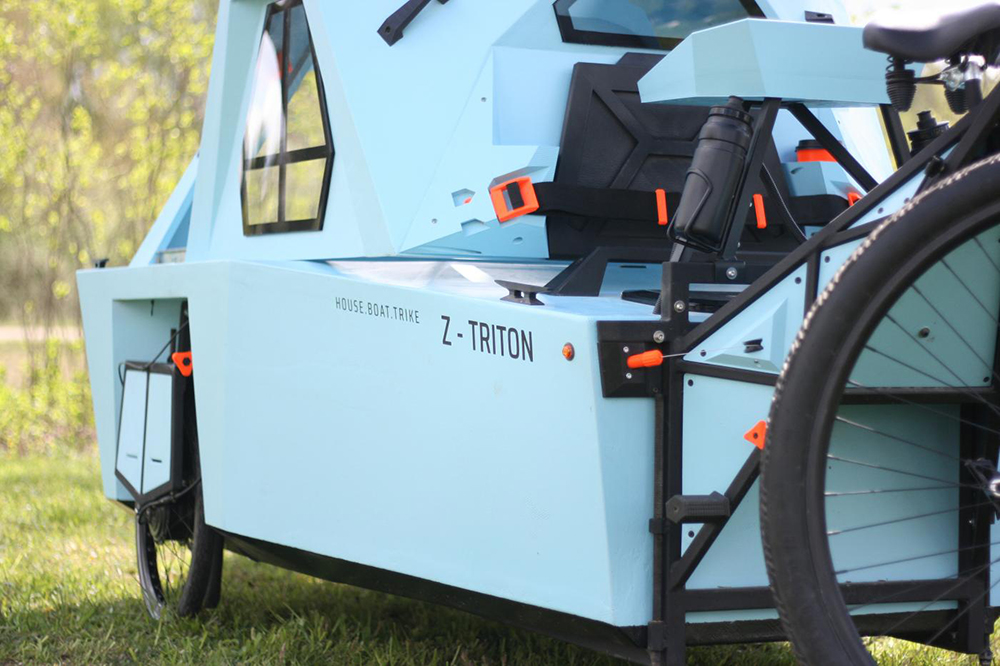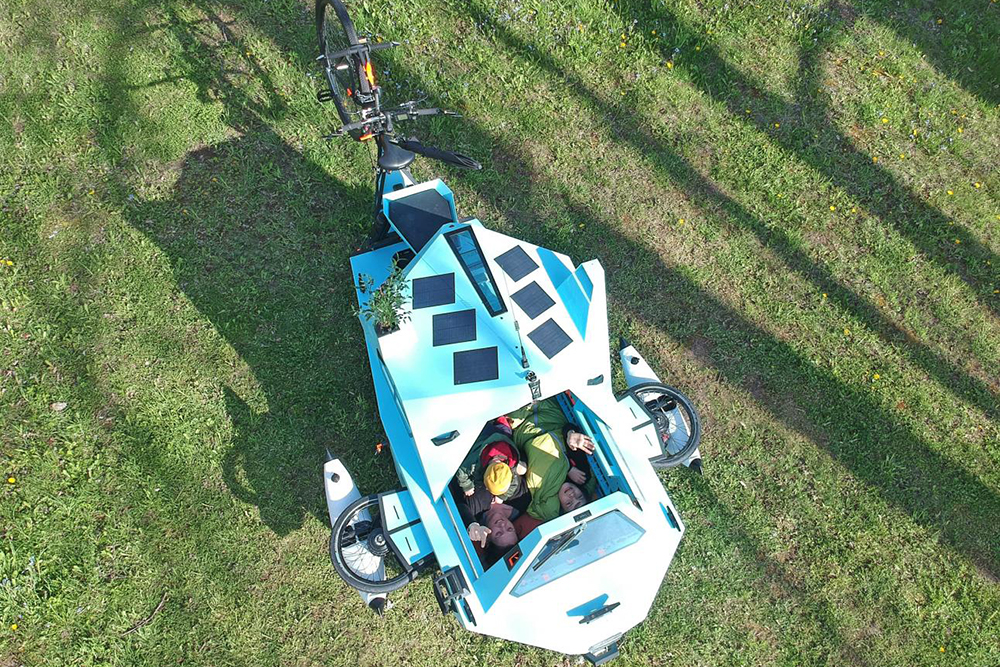Thanks to the ongoing pandemic, many of us aren’t making any serious travel plans for the near-term. Camping and RV’ing are staging a big comeback, as more people are looking for creative ways to escape closer to home. For car campers and adventure travelers who like to keep their options open, the bizarre new Z-Triton can take you just about anywhere.
Zeltini bills its forthcoming Z-Triton as either a “house-boat-trike” or a “tiny amphibious home/camper.” At first glance, it’s unlike anything on the road or the water. On land, the clunky design looks like a machine-milled rickshaw with a rescue lifeboat bolted to the back. On the water, it’s like a one-person dinghy with a mountain bike crammed into the rear. The bold, angular aesthetic feels functional and vaguely military with a dash of whimsy. It seems Zeltini is concerned more with function over form. In short: It’s very strange.
The Z-Triton is designed to be a Swiss Army vehicle for out-of-the-box campers who aren’t sure where their adventures may take them. Over solid ground, it works as an electric tricycle capable of reaching up to 25 miles per hour. There’s no official word yet on the battery’s range or capabilities. When the pilot is ready to dip into the water, the tricycle’s 36-inch front tire rises off the ground to allow the boat portion of the Z-Triton to glide smoothly across the water. Dual 250-watt outboard electric motors propel the house-boat-trike up to 19 miles per hour.
Details about the interior are scant, although Zeltini confirms the dimensions to be roughly 11 feet long by four feet wide by five feet tall. It’s hardly “spacious,” but that’s more than enough room to sleep two adults comfortably. The Z-Triton’s hull will likely house a large powerbank, and the prototype photos hint at rooftop solar panels. All of which will likely help power the vehicle’s electrical conveniences. Zeltini promises all the essentials, including lighting, HVAC, and USB power ports.
Latvia-based Zeltini seems intent on fulfilling a curious niche. In its own words, its “main focus is on building amphibian mobile homes and vehicles for human resilience and fun.” The products in its current catalog share the common themes of sustainability, renewability, innovation, and uniqueness. Most, like the Z-Triton, have yet to go into production, however.
The Z-Triton has moved beyond the concept phase into a full working prototype. Zeltini has yet to confirm if or when it will be available to buy.
For a ready-to-buy amphibious camper alternative, check out the Sealander floating travel trailer.
